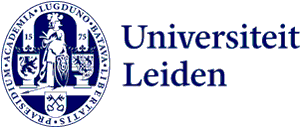
New steps for work-life balance: ‘Gaining insight into patterns nobody wants, but that still keep everyone in their grip regardless.’
In response to the Personnel Monitor light, the Steering Committee on Work-Life Balance has produced a plan to improve work-life balance at our faculty. This interview with Annemiek Hogendorp and Adriaan Rademaker, both members of the Steering Committee, will shed more light on the plan.
What can we expect from the new plan?
Annemiek: ‘The new plan offers a set of measures to help reduce workload, promote working in a socially safe environment and provide support to staff in managerial roles.’
Adriaan: ‘We’ve got the difficult situation where a manager has a role as both a coach and a supervisor, and at the same time has to make sure the workload is allocated among the staff. That makes for a complex combination of different interests that can influence such things as Performance and Development Interviews. It’s important that managers are aware of this and work on it. That’s why we’re also updating the leadership module.'
What other actions can we expect in the area of maintaining a good work-life balance?
Adriaan: ‘In consultation with the university’s central HRM department, a work-life balance toolkit has been drawn up to reduce work pressure. The Steering Group on Work-Life Balance selected items from this menu specifically for our faculty, and these ae the focus areas they have chosen: fewer and shorter meetings, taking up more vacation time and openly discussing work pressure and work-life balance in the Performance and Development Interviews and in team meetings.’
Annemiek: ‘We’re also launching an E-mail Usage Guideline in the autumn. It includes setting boundaries such as “only send e-mails during office hours and not in the evening or weekend” and “don’t always use the reply all option”. We’re developing concrete agreements and principles the faculty can use from this autumn onwards. We also want to reduce the administrative burden.’
How can you tell whether these measures are having the desired effect?
Adriaan: ‘Obviously, you can’t set up an e-mail police to monitor these principles, but it’ll help if you manage to get people to talk lightheartedly about them, saying things like “Did you press reply all too quickly again?” I think you’ll be able to see change in about six months, even if the figures don’t reflect it.’
Annemiek: ‘When we were drawing up the E-mail Usage Guidelines, the same question came up: how binding or non-binding does it have to be? You want it to be useful and for it to help people, not to turn it into another obligation. I expect that we’ll eventually see results in the next Staff Monitor.’
Ultimately, it will take more than this plan to achieve a healthier work-life balance. What else needs to be done, in your opinion?
Annemiek: ‘When you take a step back, you can view work pressure from three perspectives. The political angle: what is the influence of policy on work pressure and what resources are available? The personal angle: what is my workload, what can I cope with and what can I do to reduce work pressure? The systemic angle: what can the organisation do about work pressure?
‘As an individual or faculty, you have little influence on the political level, although it is amazing that, from this year onward, a significant amount of money will become available every year, which the Faculty Board will use mainly to appoint extra university lecturers to reduce workloads. On an individual level, information and support about work pressure and work-life balance are available. The tricky part is to find the information and to then start conversations about it, which may be difficult if you have a temporary contract. Here as well, supervisors play a crucial role. Their job is to lower the thresholds that stop people taking action and to make space for conversations on this issue.
‘The systemic level is what triggers me the most. There is still too little discussion about the underlying patterns in the organisation. In the staff monitors of 2014 and 2018, work pressure, in addition to social insecurity, emerged as a theme that needed serious action. How is it possible that, eight years later, that serious action is still needed? Who or what has an interest in maintaining work pressure? Systemic thinking allows you to gain insight into patterns nobody wants, but that keep everyone in their grip regardless. In my opinion, the solutions lie in the answers to these questions, because it steers us more towards cooperation and conversations than towards developing individual competences.’
Focus measures on work pressure reduction HUM
Conversations and Communication
The Leiden academic quarter is official. Meetings begin 15 minutes past the hour and takes 45 minutes. This creates space between meetings and work-related tasks.
Appropriate use of e-mails.
E-mail Usage Guideline for HUM will be launched in the autumn.
Right to take breaks
Take your holidays! The supervisor keeps track of vacation time and explicitly discusses plans for leave with their members of staff.
Working arrangements
Discuss work pressure and wellbeing in the Performance and Development interview.
Conversations
Discuss causes of work pressure and any possible measures to reduce work pressure in your team. Make clear agreements on the subject.
